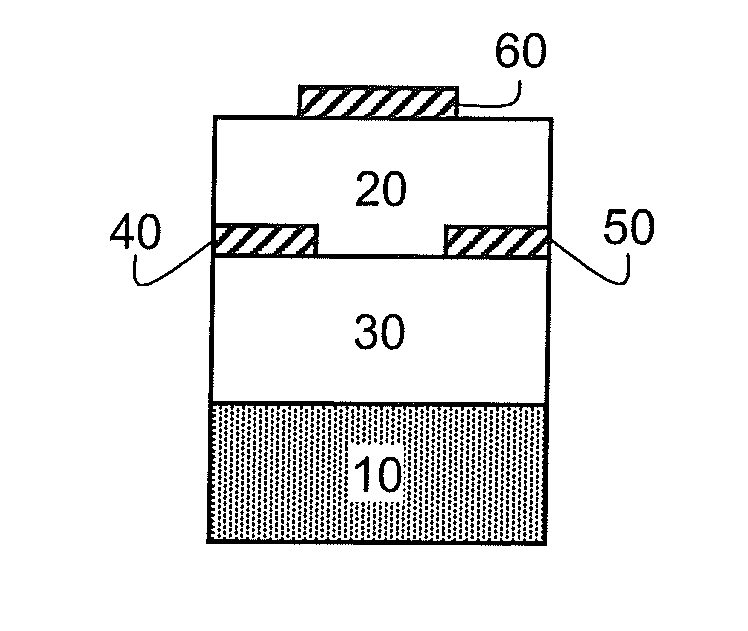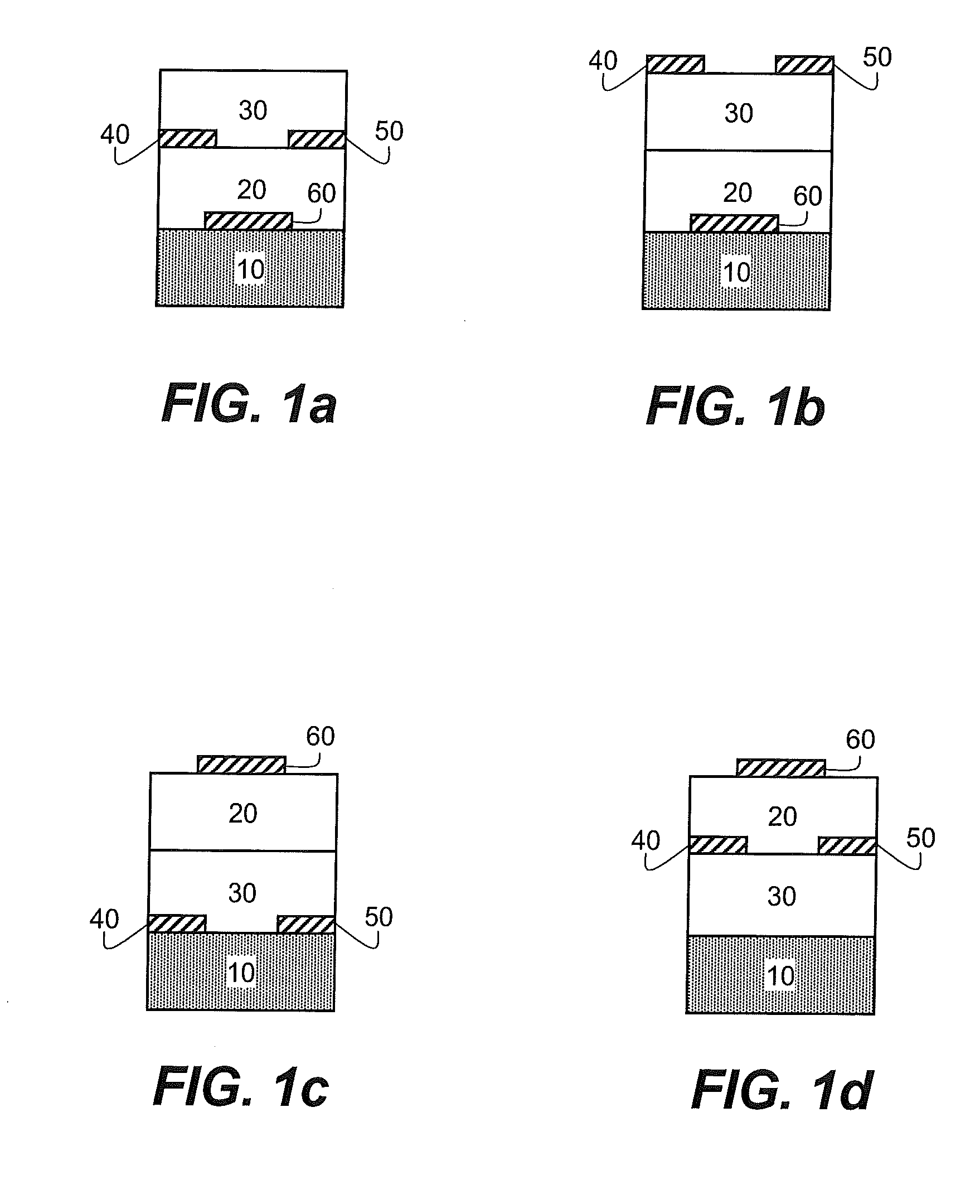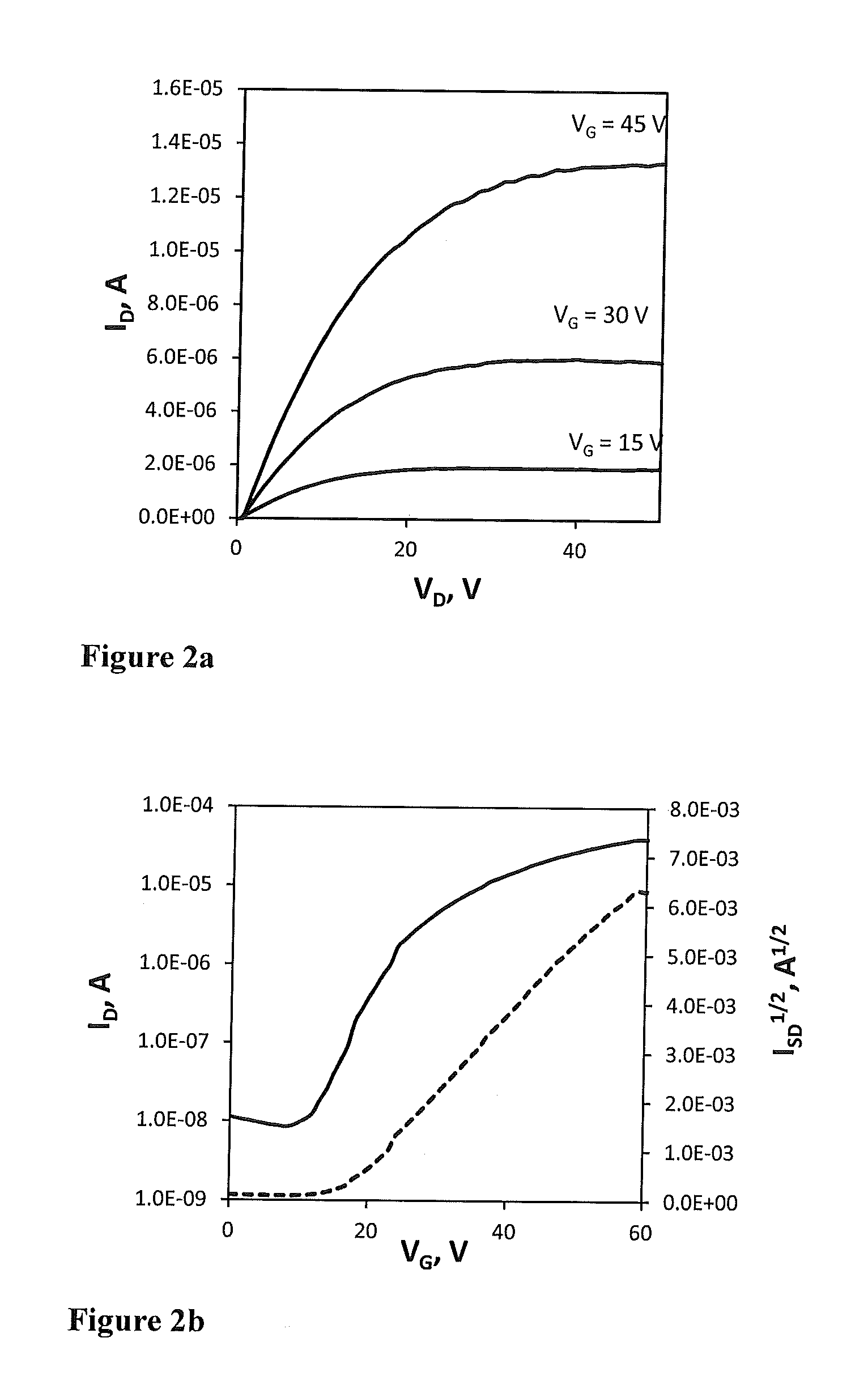Devices containing organic polymeric multi-metallic composites
a multi-metallic composite and polymer technology, applied in the direction of transistors, thermoelectric devices, solid-state devices, etc., can solve the problems of amorphous silicon still having its drawbacks, limited application of amorphous silicon to low-speed devices, and amorphous silicon, so as to improve the properties of organic field-effect transistors, improve the effect of dielectric materials and easy manufacturing
- Summary
- Abstract
- Description
- Claims
- Application Information
AI Technical Summary
Benefits of technology
Problems solved by technology
Method used
Image
Examples
invention example 1
Preparation of Poly(methyl methacrylate)(PMMA)-BaTi(MIP)6 Composite
[0196]To a 10 ml solution of PMMA (20 weight %) in anisole, 2.5 ml solution of BaTi(MIP)6 prepared in Bi-Metallic Synthesis 1 was added to obtain a PMMA-BaTi(MIP)6 composite mixture that contained 8.5 weight % of barium. The resulting mixture was diluted by addition of 10 ml of anisole followed by addition of 2.3 ml of 2-methoxy isopropanol and 1.5 ml of carbitol. The solution was mixed by stirring for 12 hours to prepare the desired organic polymeric multi-metallic alkoxide composite.
invention example 2
Preparation of Poly(methyl methacrylate)(PMMA-BaTi(TGEE)6 Composite
[0197]To an 18 ml solution of PMMA (20 weight %) in anisole, a 3.5 ml solution of BaTi(TGEE)6 prepared in Bi-metallic Synthesis 2 was added to obtain a PMMA-BaTi(TGEE)6 composite mixture that contained 7.0 weight % of barium. The mixture was stirred for 2 hours then diluted by addition of 19 ml anisole followed by 3 ml of carbitol. The solution was mixed by stirring for additional 2 hours to provide the desired organic polymeric multi-metallic alkoxide composite.
invention example 3
Preparation of Poly[methyl methacrylate-co-(octyl methacrylate-co-(2-hydroxyethyl methacrylate)]-BaTi(MIP)6 Composite
[0198]To a 10 ml solution of the polymer prepared in Polymer Synthesis 2 (20 weight %) in anisole, 5.5 ml of anisole, 3.4 ml of 2-methoxy isopropanol, and 0.4 ml of acetoxy acetone were added. To this solution, 3.0 ml of the solution of BaTi(MIP)6 prepared in Bi-metallic Synthesis 1 was added to obtain a polymer-BaTi(MIP)6 composite mixture that contained 13 weight % of barium. The mixture was further diluted with 12.3 ml of a 1:1 volume % solution of anisole / 2-methoxy isopropanol. The solution was mixed by stirring for 12 hours to provide the desired organic polymeric multi-metallic alkoxide composite.
PUM
| Property | Measurement | Unit |
|---|---|---|
| temperatures | aaaaa | aaaaa |
| temperature | aaaaa | aaaaa |
| temperatures | aaaaa | aaaaa |
Abstract
Description
Claims
Application Information
 Login to View More
Login to View More - R&D
- Intellectual Property
- Life Sciences
- Materials
- Tech Scout
- Unparalleled Data Quality
- Higher Quality Content
- 60% Fewer Hallucinations
Browse by: Latest US Patents, China's latest patents, Technical Efficacy Thesaurus, Application Domain, Technology Topic, Popular Technical Reports.
© 2025 PatSnap. All rights reserved.Legal|Privacy policy|Modern Slavery Act Transparency Statement|Sitemap|About US| Contact US: help@patsnap.com



